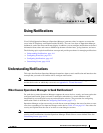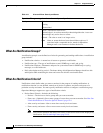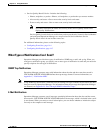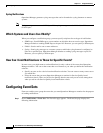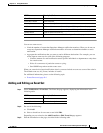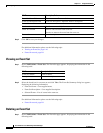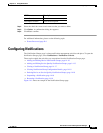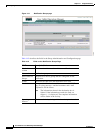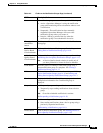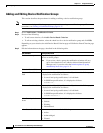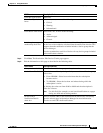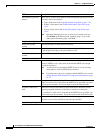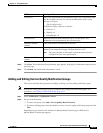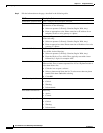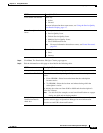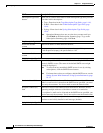
CHAPTER
14-1
User Guide for Cisco Unified Operations Manager
OL-10041-01
14
Using Notifications
Cisco Unified Operations Manager (Operations Manager) generates alerts in response to events that
occur in the IP Telephony environment and the IP fabric. You can view alerts on Operations Manager
dashboards, such as the Alerts and Events display. In addition, you can configure notifications to forward
information about alerts and events to SNMP trap daemons on other hosts, syslog daemons, and users.
The following topics explain notifications concepts and provide procedures for managing notifications:
• Understanding Notifications, page 14-1
• Configuring Event Sets, page 14-4
• Configuring Notifications, page 14-7
• Customizing Events, page 14-19
Understanding Notifications
This topic describes how Operations Manager determines when to send a notification and introduces the
concepts that you need to be familiar with to configure notifications.
Note Notifications monitor events on device roles, not on device components. For a list of supported events
and the device roles on which they can occur, see Appendix D, “Events Processed.”
What Causes Operations Manager to Send Notifications?
For each alert or event, Operations Manager compares the event, devices, severity, and state against the
configured notification groups and sends a notification when there is a match. Matches can be
determined by user-configured event sets and notification criteria. (The procedure for configuring
notification criteria is described in Configuring Notifications, page 14-7.)
Operations Manager assigns one severity to each alert or event and changes the state of an alert or event
over time, responding to user input and changes on the device. Table 14-1 on page 14-2 lists values for
severity and explains how the state of an alert or event changes over time.
Note You can change event names to names that are more meaningful to you. You can also change the event
severity sent in notifications from the Operations Manager default value to a user-defined value. See
Customizing Events, page 14-19.



